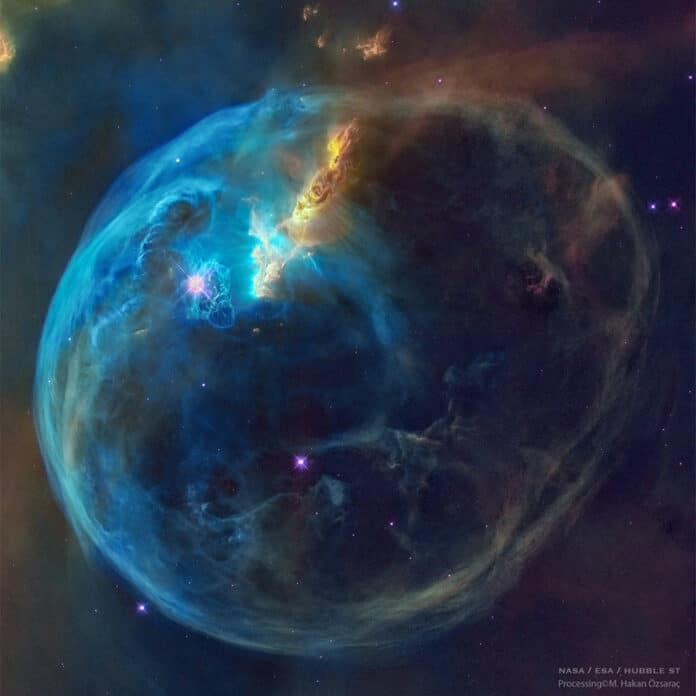Massive stars can blow bubbles. NASA recently shared a marvelous image of a blue cosmic bubble on its official Instagram handler.
The image showcases perhaps the most famous of all-star bubbles, NGC 7635, also known simply as the Bubble Nebula. It is located almost 7,100 light-years from Earth in the constellation Cassiopeia. The 7-light-year-diameter bubble provides evidence of violent processes at work even though it appears fragile.
A hot, O-type star around 45 times more massive than the Sun and several hundred thousand times more bright is located above and to the left of the bubble’s core. The star is about 4 million years old and will become a supernova in 10-20 million years. The structure of blazing gas versus denser material in a nearby molecular cloud has been blasted out by a mighty stellar wind and intense radiation from that star.
The star’s gas heats up to the point that it escapes into space at a rate of 4 million miles per hour (6.4 million kilometers per hour); when the hot “stellar wind” meets the surrounding frigidness of space, it folds and forms an outer edge.
NASA’s Hubble’s Wide Field Camera-3 depicts this nebula in visible light and shows off its brilliant colors: hydrogen is green, oxygen is blue, and nitrogen is red.
